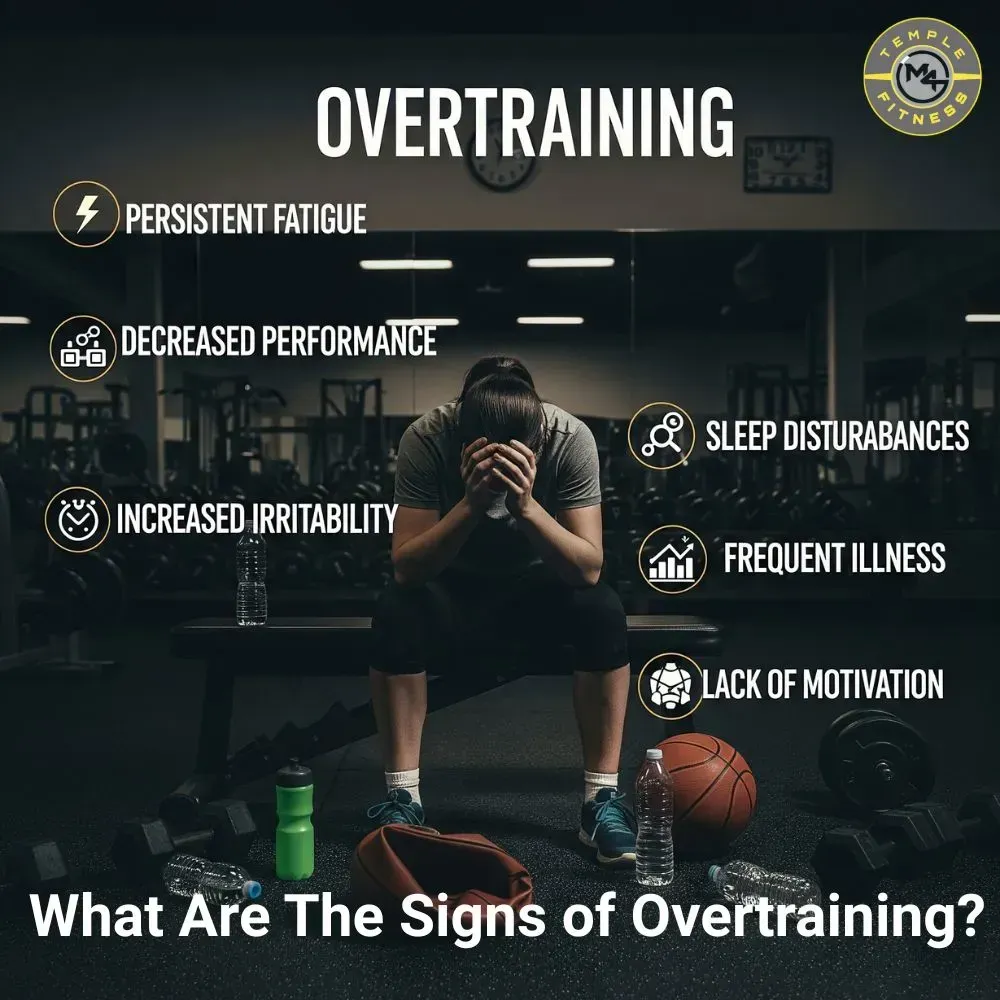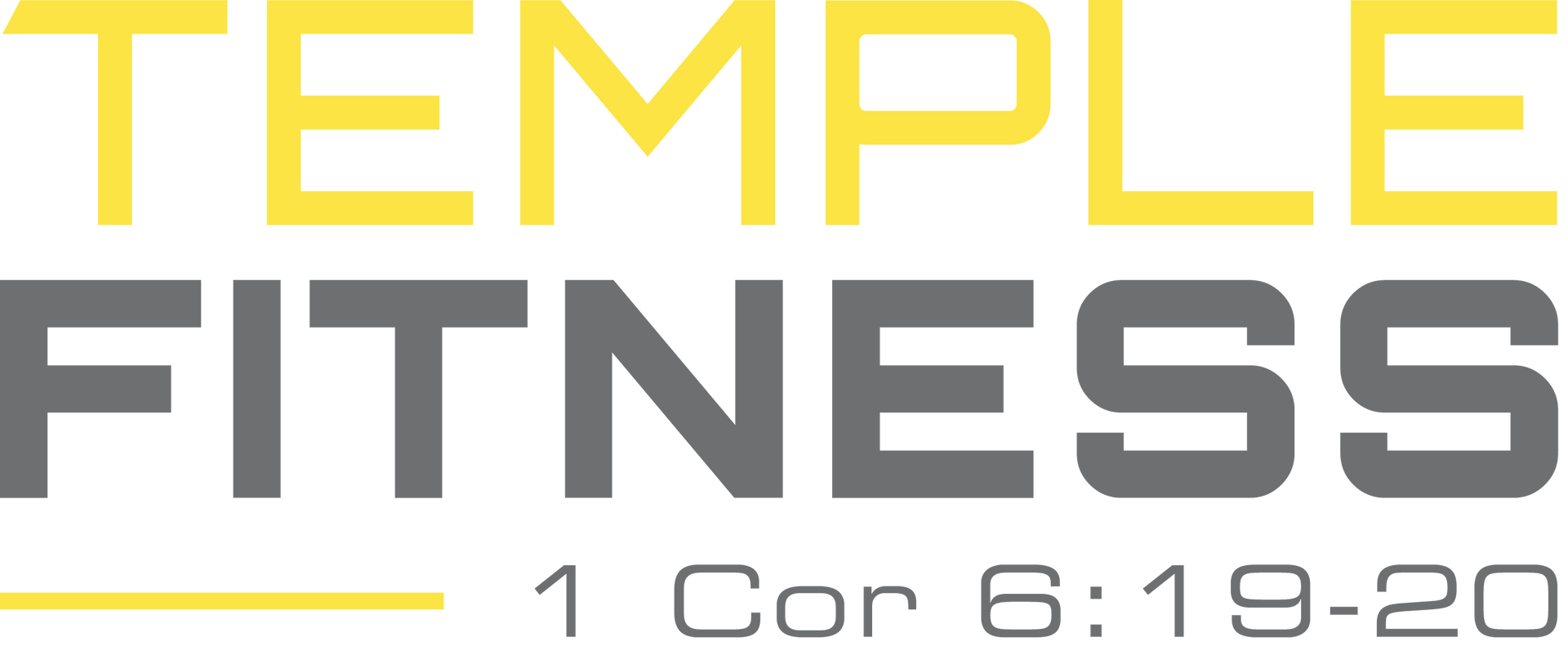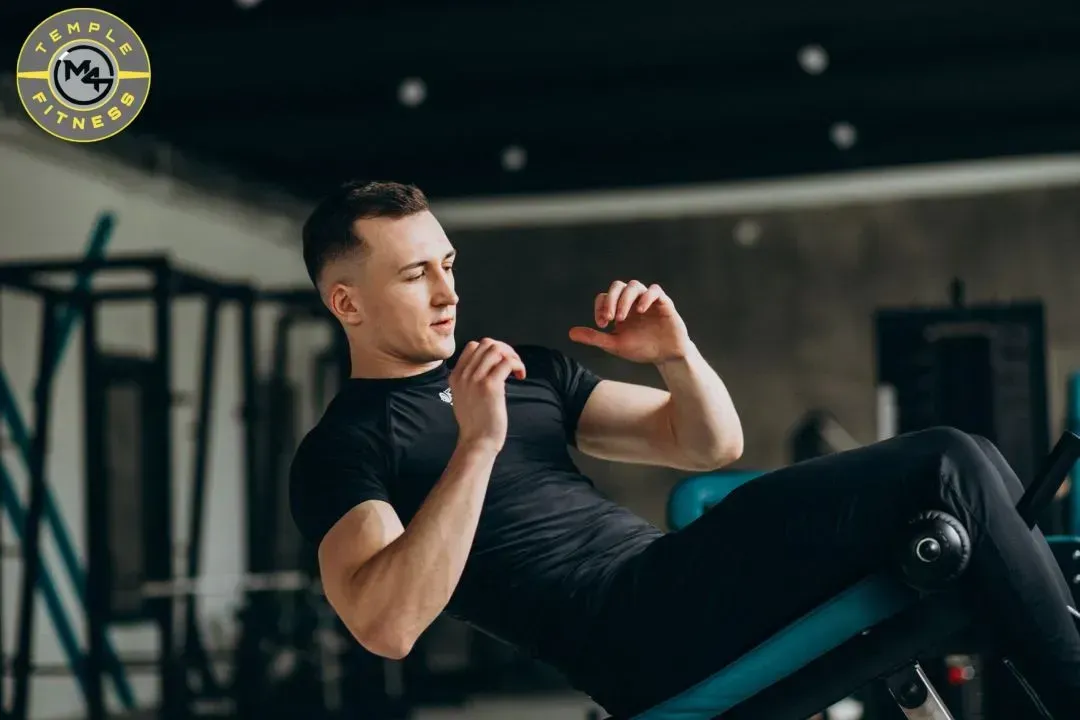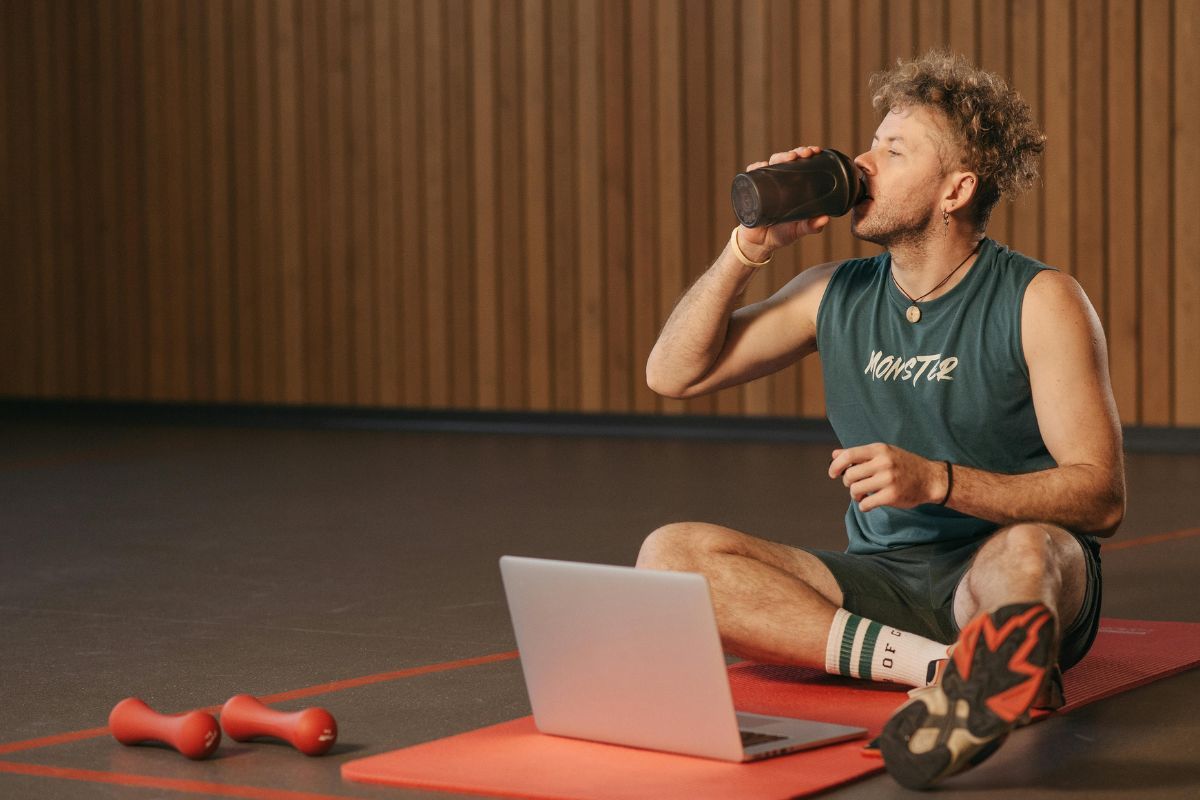What Are The Signs of Overtraining? Don't Miss These Signs
Overtraining happens when you do not allow your body sufficient rest between workouts. After a point, more exercise stops being helpful. It starts to harm your health instead. Training too often without rest can block the results you want.
What are the signs of overtraining? Overtraining syndrome (OTS) can hinder your progress, reduce fitness, compromise performance, and lead to injuries. Weightlifting, cardio, and HIIT workouts can all push you into burnout. It is also common in athletes who focus on one sport.
Below, we will look at the warning signs of overtraining. You will also learn how to prevent it, treat it, and recover from OTS.

What Are The Signs of Overtraining and When Hard Work Turns Harmful
Pushing your body will strengthen you, but excessive pushing can have the opposite effect. Overtraining affects both men and women, showing clear warning signs that shouldn’t be ignored. Let's find out:
1. Not Eating Enough
People train hard, but cut down on food at the same time. This starves the body of fuel, lowering its performance. Over time, it can lead to deficiencies like anemia. Poor nutrition can affect endocrine health, digestion, and heart function. When men don’t eat enough, it can cause low energy, poor concentration, mood swings, and irritability. Menstrual problems and irregular periods in women can result from skipping meals.
2. Overuse Injuries
Doing the same movement every day can damage joints and bones. Runners often suffer from shin splints, stress fractures, or plantar fasciitis. These types of injuries build up over time and worsen without rest. High-impact movement puts a great deal of stress on the body. Downtime is important for full recovery.
3. Pain, Strain, and Soreness
Engaging in too much high-intensity training leaves the body strained and sore. Muscles can have micro-tears that hurt. Continual soreness prevents one from continuing to train. Injuries also occur more easily when recovery is not given when it is due. Stop and heed the body's warnings when the pain is stabbing and not usual.
4. Loss of Appetite and Weight Loss
Exercise generally stimulates hunger, but overtraining does the opposite. Hormone imbalances can depress your appetite. You'll eat little without even noticing, and lose weight. Fatigue also contributes to this problem, making food less enjoyable. In the long term, it drains strength and recovery too.
5. Fatigue
It's usual to be tired after exercise, but not every time. Excessive HIIT workouts without proper rest can exhaust the body's energy reserves. Weakness during or after exercise is prevalent. Skipping meals before training makes the situation worse. The body then utilizes stored carbohydrates, protein, and fat as fuel and leaves you feeling drained.
6. Chronic Injuries or Muscle Soreness
When your body never fully recovers, soreness is a bigger problem. Injuries can linger for weeks or even months. Constantly being stressed makes it more difficult for muscles and joints to recover. Training while in pain only extends recovery. Rest days are just as valuable as training days.
7. Irritability and Agitation
Overtraining disrupts stress hormone levels. This can lead to mood swings, depression, or mental fogginess. You may become irritable or struggle to concentrate. It is normal to lose interest in workouts as stress builds up. Breaks allow the mind and body to find balance.
8. Decline in Performance
Overtraining actually slows progress, rather than accelerating it. You may experience weakness, slowness, or reduced agility. Endurance levels decrease, making exercise more challenging. Even reaction time gets slower. Even reaction time slows down, also making progress toward fitness goals both challenging and frustrating.
9. Workouts Feel Harder
If every session is harder than normal, then overtraining may be the culprit. You may feel like you're doing more even when you're going at your normal pace. Heart rate will also stay higher during and after training. Recovery between sets is also slower. This is the body's method of demanding rest.
10. Disturbed Sleep
Overtraining stress tends to extend into sleeping time. An endocrine imbalance can make relaxation difficult. Sleep becomes shallow or interrupted. Deep sleep is necessary for the body to recover, so without it, a cycle of tiredness and poor recovery is set up.
11. Reduced Immunity or Sickness
Overtraining suppresses your immune system. You will catch colds or infections more readily. Simple illnesses take longer to bounce back from. Fatigue has become a rule. A healthy immune system requires both rest and proper nutrition to function effectively.
12. Weight Gain
Overtraining can mess with your hormones. Low testosterone and high cortisol are common when rest is lacking. This imbalance results in weight gain and fat around the belly. Knowing how much you should walk to lose weight keeps you on track. A balance between training and rest maintains weight.
13. Loss of Motivation
Overtraining can drain the enjoyment from exercise. You may get tired, demotivated, or annoyed. Progress is slow, which further decreases excitement. The mind, as well as the body, needs to have breaks in order to stay motivated. Adopting new routines or less intense exercise can bring back motivation.
Cure for Overtraining
“REST” is the best medicine for recovery from overtraining. Your body needs time off from hard training to recuperate. Slowing down the pace of life also reduces stress. It gives your body and mind time to rebuild. Even 3 or 4 days of rest can make an enormous difference.
Massage therapy can also help you recover. A massage can calm down tight muscles and ease tension. It will prevent further injury and also improve blood flow. If you cannot go to a massage therapist, apply essential oils or a muscle balm and massage yourself.
Heat and cold therapy are simple but very beneficial. Heat from a heating pad, infrared sauna, or hot bath can relax muscles and loosen up stiffness. Cold therapy, like an ice pack or cold shower, can numb pain and minimize swelling. Alternating between hot and cold can increase blood flow. This can assist your body in recovering faster.
Wrapping Up
Overtraining does not give better results. It can actually slow your progress. The best way to avoid OTS is to keep a balance. Combine the right strength training, good nutrition, and enough rest. Care for yourself before, during, and after each workout. This helps your body recover and grow stronger.
TempleFitnessFranklin coaches women, men, and all ages to work smarter, not harder. Additionally, our Strength Sisters Program creates workouts that fit women's various life stages. With faith at the center and expert coaching, you can build strength and restore balance.
Frequently Asked Questions
How long does the recovery from overtraining syndrome last?
Generally, recovery time is different for everyone. Some recover within 2 weeks with rest, but can be restored fully in 3 months.
What will be the consequence if a woman overtrains?
Overtraining causes injuries like strains, stress fractures, or tendon issues. It may also drain the enthusiasm and turn exercise into a chore.
How do you quickly get over an overtraining injury?
Rest and letting your body heal are the best method to recover. Then, adequate sleep and diet also speed up recovery.
How can you be sure if your body is overtrained?
Long-term muscle soreness and leaden legs are common signs. Reduced recovery and declining performance are also warning signs.



